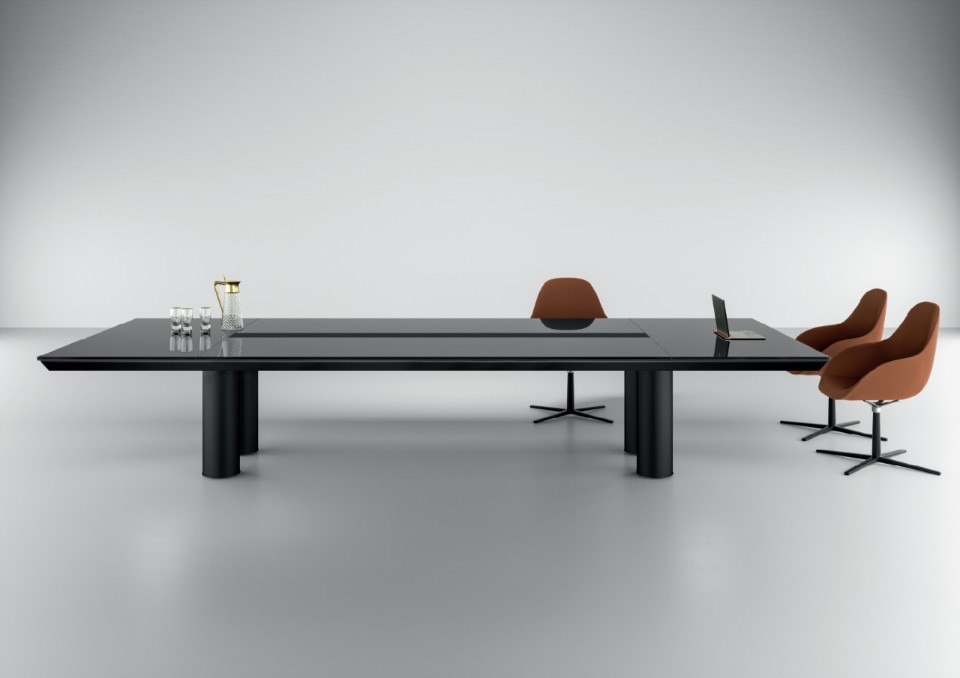The concept
LAN Architecture realised a five level, 19 m high building within a plot of 3.30 hectares comprehensive of an archives area covering approximately 1,400 m2 and a total surface of approximately 7,000 m2. This approach results in:
- considerable saving in terms of the building's envelope
- improved functionality translated by a reduced number of kilometres covered per year,
- a marginal impact on the landscape (with view points at a considerable distance from the building),
- the possibility of a maximum use of the excavated land around the building's footprint to control water recuperation and treatment on the site,
- an energetically and environmentally extremely high performance building,
- the creation of a symbol representative of the approach taken by the Meuse and Haute Marne economic support programme.
_UPD.jpg.foto.rmedium.jpg)
An archives storage building needs to have a considerable inertia with a minimal exchange with its external setting. The need for fast and simple site management and optimum storage efficiency led us to develop a simple and rational layout. The building is divided into two programmes: archives and offices. The archives section comprises 20 storehouses of 200 m2 each, complete with regulated temperature and hygrometry. The blocks can resist fire for two hours and they are equipped with a sprinkling system. The office section is embedded in a natural slope planted with trees and plants. The offices have an ideal view on the surrounding landscape.
_UPD.jpg.foto.rmedium.jpg)
Tree-scaped surfaces give some advantages; from an ecological point of view the trees protect the building against climatic issues. From an aesthetic point of view—and within an idea of landscape integration—they complete the building by inserting a pattern recurring from the landscape: "merlons", or narrow strips of land planted with hardwoods. The project of the landscape foresees the framing of the views from the offices by planting vegetable masses. Some framings already exist from the highway in the project's direction. A game of sequences is set in combination with the architectural plan in order to vary the visuals and to put an accent on the building's continuity with its landscape.
Energy
Heat production is principally based on renewable energies and a heat pump. The choice made for the ventilation was to use a double flow ventilation system with heat recuperation. This limits energy consumption resulting from heating and ensures the good sanitary quality of the air. Low-voltage lighting will result in considerable savings in terms of internal loads. Storage areas will be equipped with presence detectors. The high performance of the envelope combined with economic ventilation and lighting systems reduces energy requirements. The use of renewable energies and a heat pump will result in a high level of energy autonomy. The total power consumed by the building represents 29 kWh/m2.
This invention allows the construction of facades including reflecting units with the aim of giving the building a changing appearance determined partially by the environment partially by the weather around the building (...) extract from the EDF facades patent
_UPD.jpg.foto.rmedium.jpg)
To give the impression of a lightweight building in movement, LAN proposed incorporating stainless steel studs into the earth-coloured concrete cladding. This solution had the effect of blurring the building's limits and reflecting the surrounding colours and changing seasons. The envelope has a very high performance resulting from the materials employed and the technology used for attaching the concrete facing (reduced thermal bridges). The combination of two layers of concrete (structure + facing) and insulation (30 cm) ensures that the building has a high level of inertia favouring comfort during the summer and reduces cooling requirements.
Facade
The elevations incorporate a total of 120,000 stainless steel studs (7-cm diameter and 1-mm thick) incorporated into the formwork during the casting of the integrally coloured prefabricated concrete elevation panels. The panels are 15.65 m high and either 2.26-m or 2.33-m wide depending on whether they are on the long or short side of the building. The 8-cm thick panels will be reinforced with concrete ribbing (+ 7 cm). The complex will be suspended from reinforced concrete walls and held in position using distancing jacks. The elevations will have a total thickness of 68 cm. The facade's building process was the subject of a patent.
_UPD.jpg.foto.rmedium.jpg)
_UPD.jpg.foto.rmedium.jpg)
_UPD.jpg.foto.rmedium.jpg)
_UPD.jpg.foto.rmedium.jpg)
_UPD.jpg.foto.rmedium.jpg)


Do you know how a food disposer works?
60% of American kitchens have one, and food waste disposers are becoming increasingly popular in Italy as well. But what exactly are they, and how do they work?


_UPD1.jpg.foto.rmedium.jpg)

